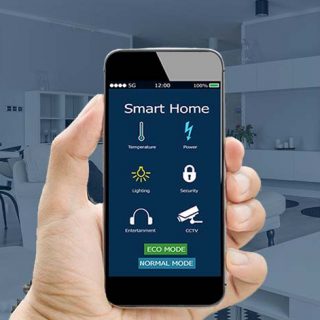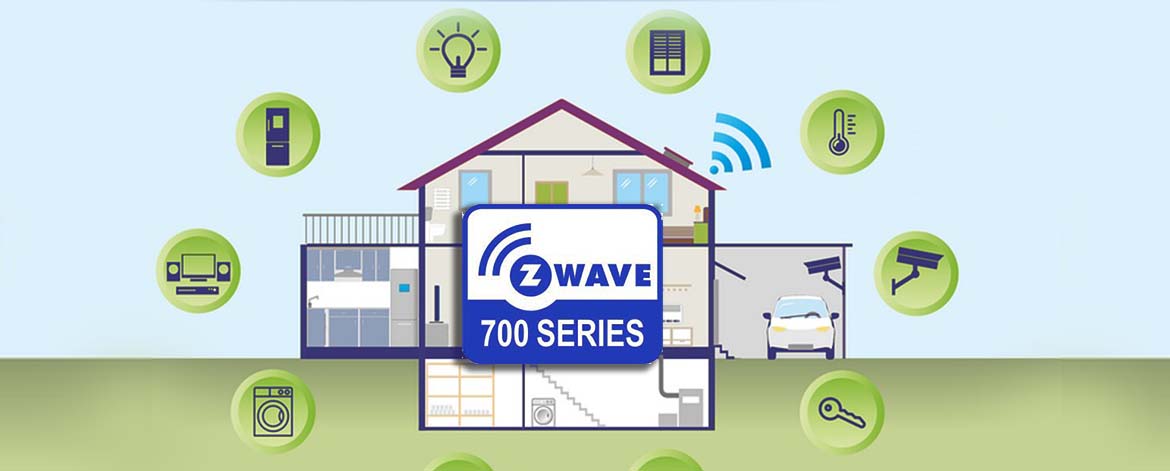Z-Wave is a wireless protocol, primarily used for Home Automation Application. It supports mesh networks to communicate successfully with other devices. Z-Wave has the ability to support 232 devices(nodes) in a mesh network and is a reliable protocol for larger smart homes. Z-Wave has led the market with new features and higher interoperability standards. Z-Wave has introduced its new latest solution called Z-Wave 700 series, the 700 series solution is a next-generation upgrade on Z-Wave 500 series. The new series has come up with added features to improve the efficiency in addition to the existing features of the 500 series. It is leveraging the effective combination of low power, long-range, and designed to meet the future context-aware smart home applications.
VOLANSYS’ next-generation CENTAURI 200 IoT Gateway supports the mikroBUS based Z-Wave 700 series radio module. Z-Wave 700 solution has low power and long-range radio modules for next-generation mesh networks applications including Smart Home Solution, Smart Asset Tracking Solution, Smart Retail Solution, Smart Healthcare Solution, and Smart Building Automation Solution. The new gateway is based on Z-Wave 700 and is interoperable with the installed base of existing Z-Wave devices and is secured with Z-Wave’s industry-best S2 encryption. Let’s see how Z-Wave 700 compares with Z-Wave 500 series.
The comparison between Z-Wave 500 and Z-Wave 700 series modules
| Feature | Z-Wave 500 | Z-Wave 700 |
| Sub-GHz mesh data rate | 9.6/40/100 kb/s | 9.6/40/100 kb/s |
| Certification requirement | Z-Wave Plus | Z-Wave Plus v2 |
| Security S2 & Smartstart support | Yes | Yes |
| Range* | 40 m | 2x-4x longer |
| RX/TX current | 32mA | ~3X reduction |
| Sleep mode current | 1uA | <1uA |
| Coin cell battery operation, +10 years for end devices | No | Yes |
| Supply voltage | 2.3-3.6V | 1.8-3.6V |
| MCU & RTOS | 8-bit, No | 32-bit, Yes |
| Application flash | 32 kB | 64kB |
| Need external OTA flash | Yes | No |
Coverage Area (Range):
The 700 Series provides enough TX-RX power for multiple story buildings and complete coverage into outdoor yard space. A sensitivity gain extends Z-Wave’s direct range to 100 meters and the mesh network range to 400 meters. The 700’s increased transmission power means fewer hops between devices and fewer repeaters needed, improving the energy efficiency of the entire mesh network. The 700 series increases direct range by 150% over the 500 series in the US, and 250% for European and Asian markets, with no SAW filter needed.
Powerful Processor
Z-Wave 700 has a powerful 32-bit ARM® Cortex-M CPU and 64 kB of application flash memory. This helps for fast and secure inclusion of end devices and sensors using Smartstart and S2 security encryption for virtually hacker-proof deployments. Higher flash memory helps for the Over-The-Air update of Z-Wave apps to make your GW investment future proof.
Low Power Consumption
The Z-Wave 700 series uses 3x less power for Rx/Tx compared to 500 series. This helps Gateways to have lower operating cost especially when they are designed to run 24 x 7. Wireless interfaces like Bluetooth, Zigbee, Z-Wave, Wi-Fi, and Cellular are becoming ubiquitous in devices due to the boom in IoT Applications. VOLANSYS has developed many off the shelf products in the IoT Gateway segment which OMEs can leverage for their development.
See how we have helped our esteemed clients to leverage wireless connectivity interfaces in their products – Read Case Studies.
Note: The content of this blog is based on personal knowledge or any research work done by any individual. There are figures and images used in this blog are used from their individual promoters’ content or websites such as Z-Wave Alliance. Figures are kept with the best of our knowledge and not to mislead in any manner.

About the Author: Mitesh Koradia
Mitesh has very rich experience of 13+ years for developing solutions for Networking and IoT domain. Currently, he is leading team to develop next generation IoT Gateway solution. His expertise is to architect and create IoT solutions based on the different RF front-end according to solution needs.









